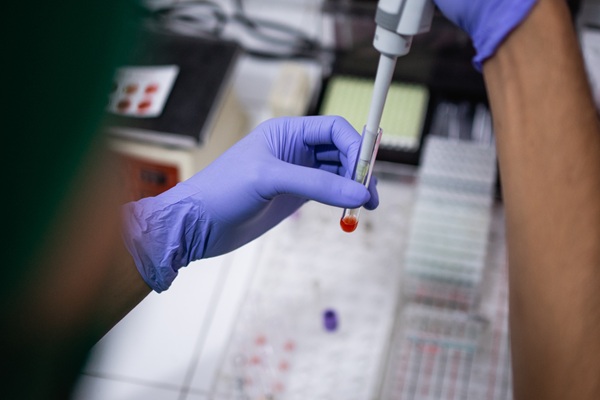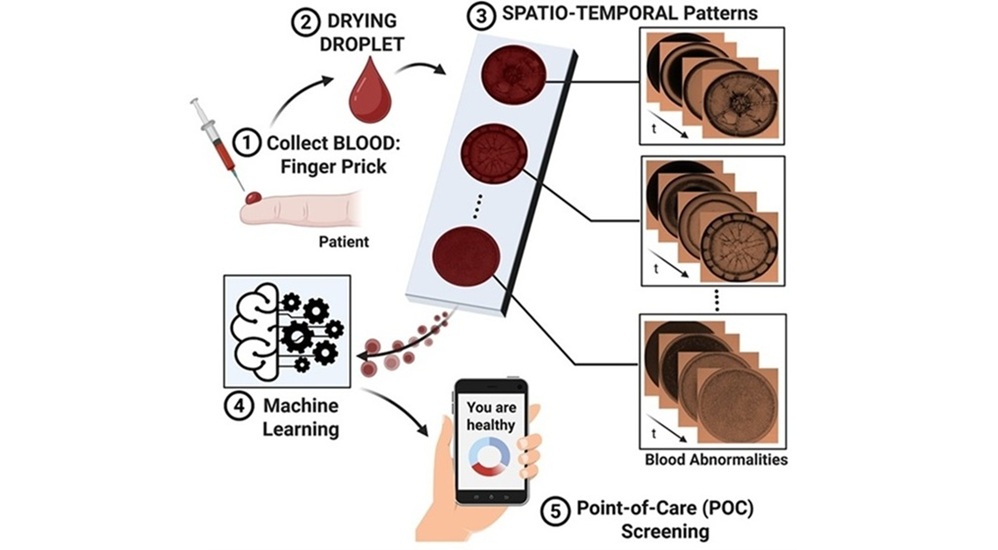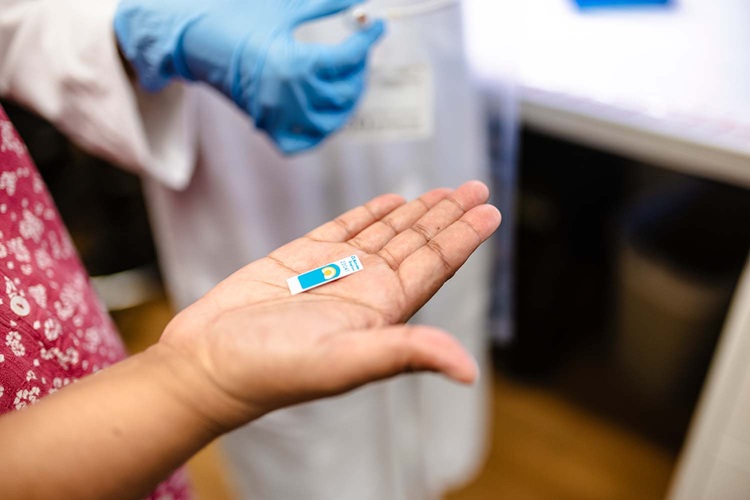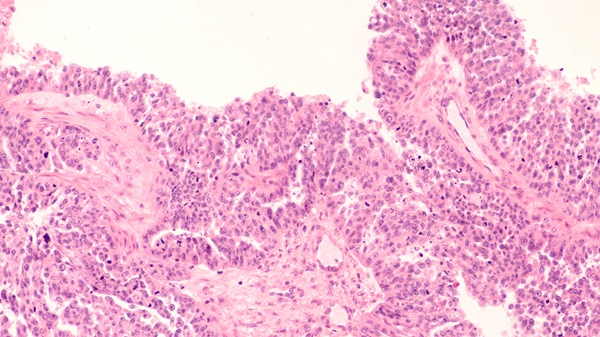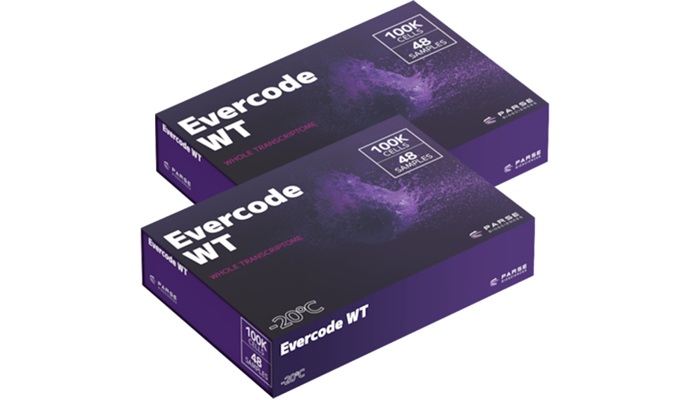Gastrointestinal Panel Delivers Rapid Detection of Five Common Bacterial Pathogens for Outpatient Use
|
By LabMedica International staff writers Posted on 10 Mar 2025 |
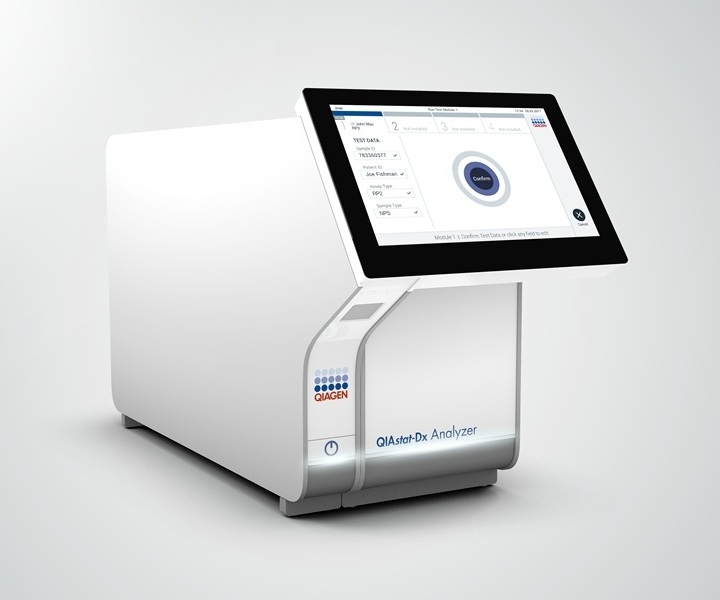
Acute infectious gastroenteritis results in approximately 179 million cases each year in the United States, leading to a significant number of outpatient visits and hospitalizations. To address this, a new gastrointestinal panel offers rapid detection of five common bacterial pathogens for outpatient use, enabling faster and more informed treatment decisions.
QIAGEN’s (Venlo, The Netherlands) QIAstat-Dx Gastrointestinal Panel 2 Mini B has been cleared by the U.S. Food and Drug Administration (FDA) for clinical use, enhancing the company’s syndromic testing offerings in the U.S. market. This newly approved panel focuses specifically on bacterial infections, detecting Campylobacter, Salmonella, Shiga-like toxin-producing Escherichia coli (STEC), Shigella, and Yersinia enterocolitica—pathogens identified by the Infectious Diseases Society of America (IDSA) as major causes of gastrointestinal illnesses. The panel complements the existing QIAstat-Dx Gastrointestinal Panel 2 Mini B&V (Bacterial & Viral), which includes these same bacterial pathogens and also adds Norovirus.
The QIAstat-Dx Gastrointestinal Panel 2 Mini B operates on the QIAstat-Dx system, utilizing real-time PCR technology to rapidly amplify multiple genetic targets in a single reaction. Results are delivered in approximately one hour, with less than one minute of hands-on time required. Cycle threshold (Ct) values and amplification curves offer additional insights into co-infections, all of which are immediately visible on the instrument’s touchscreen without needing any additional software. The QIAstat-Dx system is available in over 100 countries, with more than 4,600 instruments installed globally by the end of 2024.
This marks the second FDA clearance for a QIAstat-Dx panel in 2025, following the approval of five panels for use on the QIAstat-Dx system over the past 10 months. QIAGEN has now received regulatory clearance for three mini panels designed for outpatient use, which assist in providing fast and accurate treatment decisions for both respiratory and gastrointestinal conditions. The QIAstat-Dx Gastrointestinal Panel 2 Mini B is specifically optimized for settings where bacterial pathogens are the primary concern, offering a complement to the previously cleared QIAstat-Dx Gastrointestinal Panel 2 Mini B&V, which covers both bacterial and viral targets.
QIAGEN is the first company to provide both comprehensive and targeted syndromic gastrointestinal panels, enabling laboratories to customize testing to meet their specific needs. In addition to the newly cleared panels, the FDA-approved 16-target QIAstat-Dx Gastrointestinal Panel 2 is ideal for hospitalized patients with higher risk factors for severe disease. These panels address the unique diagnostic needs of both inpatient and outpatient care, responding to the increasing demand for flexible testing options to manage healthcare reimbursement challenges. QIAGEN also plans to expand its QIAstat-Dx portfolio and has recently submitted the QIAstat-Dx Rise, a high-capacity instrument capable of processing up to 160 tests per day, for U.S. regulatory approval.
“QIAGEN is committed to expanding its syndromic testing portfolio in the U.S. to provide laboratories and clinicians with targeted, efficient diagnostic solutions,” said Nadia Aelbrecht, Vice President and Head of Infectious Diseases at QIAGEN. “With the FDA clearance of our second QIAstat-Dx mini gastrointestinal panel, we are further strengthening our ability to address diverse patient needs while supporting healthcare providers in optimizing diagnostic workflows and offering them the flexibility they need.”
Latest Microbiology News
- Rapid Diagnostic Test Matches Gold Standard for Sepsis Detection
- Rapid POC Tuberculosis Test Provides Results Within 15 Minutes
- Rapid Assay Identifies Bloodstream Infection Pathogens Directly from Patient Samples
- Blood-Based Molecular Signatures to Enable Rapid EPTB Diagnosis
- 15-Minute Blood Test Diagnoses Life-Threatening Infections in Children
- High-Throughput Enteric Panels Detect Multiple GI Bacterial Infections from Single Stool Swab Sample
- Fast Noninvasive Bedside Test Uses Sugar Fingerprint to Detect Fungal Infections
- Rapid Sepsis Diagnostic Device to Enable Personalized Critical Care for ICU Patients
- Microfluidic Platform Assesses Neutrophil Function in Sepsis Patients
- New Diagnostic Method Confirms Sepsis Infections Earlier
- New Markers Could Predict Risk of Severe Chlamydia Infection
- Portable Spectroscopy Rapidly and Noninvasively Detects Bacterial Species in Vaginal Fluid
- CRISPR-Based Saliva Test Detects Tuberculosis Directly from Sputum
- Urine-Based Assay Diagnoses Common Lung Infection in Immunocompromised People
- Saliva Test Detects Implant-Related Microbial Risks
- New Platform Leverages AI and Quantum Computing to Predict Salmonella Antimicrobial Resistance
Channels
Clinical Chemistry
view channel
Chemical Imaging Probe Could Track and Treat Prostate Cancer
Prostate cancer remains a leading cause of illness and death among men, with many patients eventually developing resistance to standard hormone-blocking therapies. These drugs often lose effectiveness... Read more
Mismatch Between Two Common Kidney Function Tests Indicates Serious Health Problems
Creatinine has long been the standard for measuring kidney filtration, while cystatin C — a protein produced by all human cells — has been recommended as a complementary marker because it is influenced... Read moreMolecular Diagnostics
view channel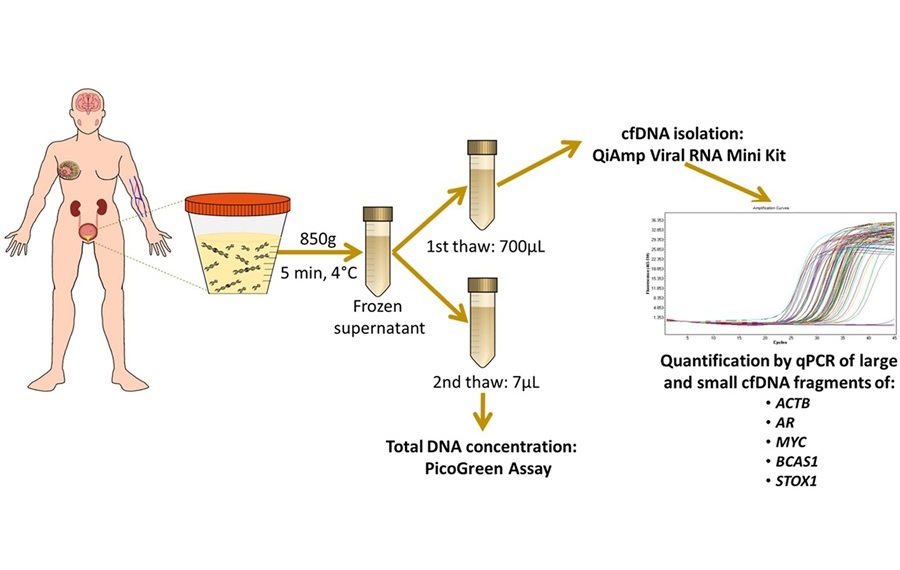
Simple Urine Test to Revolutionize Bladder Cancer Diagnosis and Treatment
Bladder cancer is one of the most common and deadly urological cancers and is marked by a high rate of recurrence. Diagnosis and follow-up still rely heavily on invasive cystoscopy or urine cytology, which... Read more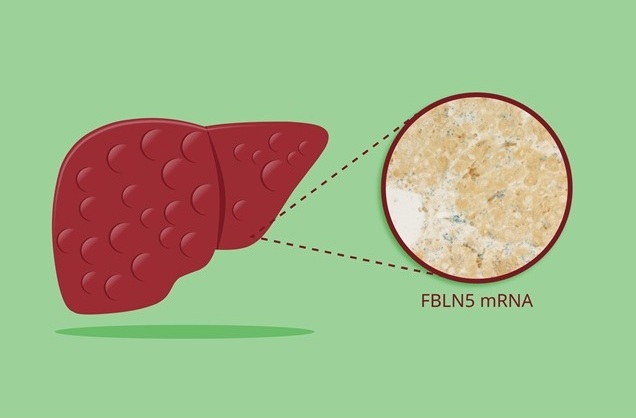
Blood Test to Enable Earlier and Simpler Detection of Liver Fibrosis
Persistent liver damage caused by alcohol misuse or viral infections can trigger liver fibrosis, a condition in which healthy tissue is gradually replaced by collagen fibers. Even after successful treatment... Read moreHematology
view channel
Platelet Activity Blood Test in Middle Age Could Identify Early Alzheimer’s Risk
Early detection of Alzheimer’s disease remains one of the biggest unmet needs in neurology, particularly because the biological changes underlying the disorder begin decades before memory symptoms appear.... Read more
Microvesicles Measurement Could Detect Vascular Injury in Sickle Cell Disease Patients
Assessing disease severity in sickle cell disease (SCD) remains challenging, especially when trying to predict hemolysis, vascular injury, and risk of complications such as vaso-occlusive crises.... Read more
ADLM’s New Coagulation Testing Guidance to Improve Care for Patients on Blood Thinners
Direct oral anticoagulants (DOACs) are one of the most common types of blood thinners. Patients take them to prevent a host of complications that could arise from blood clotting, including stroke, deep... Read moreImmunology
view channel
New Test Distinguishes Vaccine-Induced False Positives from Active HIV Infection
Since HIV was identified in 1983, more than 91 million people have contracted the virus, and over 44 million have died from related causes. Today, nearly 40 million individuals worldwide live with HIV-1,... Read more
Gene Signature Test Predicts Response to Key Breast Cancer Treatment
DK4/6 inhibitors paired with hormone therapy have become a cornerstone treatment for advanced HR+/HER2– breast cancer, slowing tumor growth by blocking key proteins that drive cell division.... Read more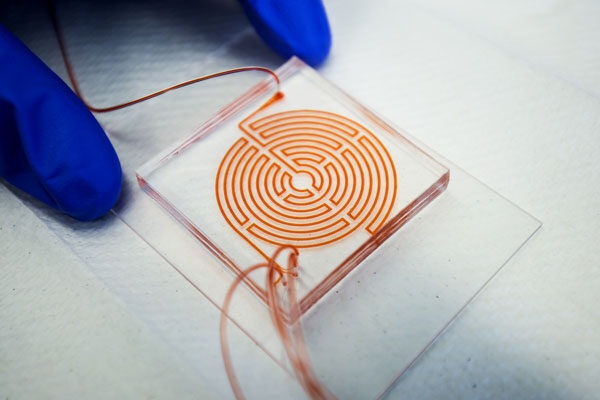
Chip Captures Cancer Cells from Blood to Help Select Right Breast Cancer Treatment
Ductal carcinoma in situ (DCIS) accounts for about a quarter of all breast cancer cases and generally carries a good prognosis. This non-invasive form of the disease may or may not become life-threatening.... Read morePathology
view channel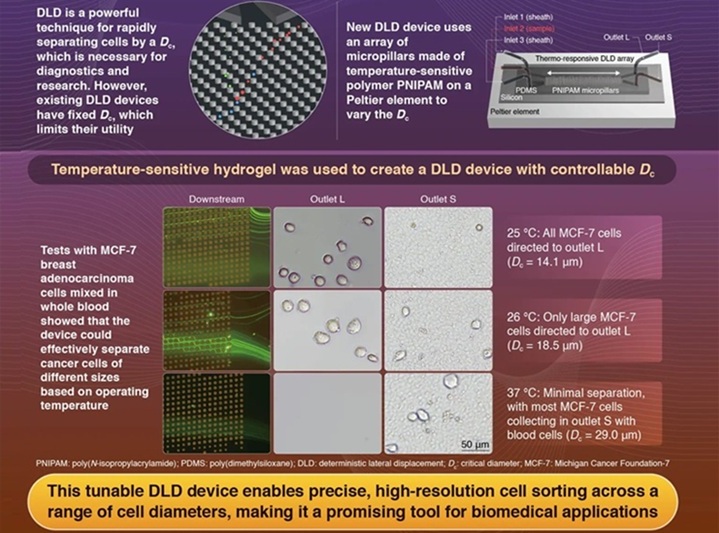
Tunable Cell-Sorting Device Holds Potential for Multiple Biomedical Applications
Isolating rare cancer cells from blood is essential for diagnosing metastasis and guiding treatment decisions, but remains technically challenging. Many existing techniques struggle to balance accuracy,... Read moreAI Tool Outperforms Doctors in Spotting Blood Cell Abnormalities
Diagnosing blood disorders depends on recognizing subtle abnormalities in cell size, shape, and structure, yet this process is slow, subjective, and requires years of expert training. Even specialists... Read moreTechnology
view channel
Artificial Intelligence Model Could Accelerate Rare Disease Diagnosis
Identifying which genetic variants actually cause disease remains one of the biggest challenges in genomic medicine. Each person carries tens of thousands of DNA changes, yet only a few meaningfully alter... Read more
AI Saliva Sensor Enables Early Detection of Head and Neck Cancer
Early detection of head and neck cancer remains difficult because the disease produces few or no symptoms in its earliest stages, and lesions often lie deep within the head or neck, where biopsy or endoscopy... Read moreIndustry
view channel
Abbott Acquires Cancer-Screening Company Exact Sciences
Abbott (Abbott Park, IL, USA) has entered into a definitive agreement to acquire Exact Sciences (Madison, WI, USA), enabling it to enter and lead in fast-growing cancer diagnostics segments.... Read more
















